Archive
Air India
- Air India
Air India International, Tata Airlines
- Airline
Air India was one of the largest art collectors in Bombay. Indian art was used as branding for Air India in international competition right from the start.
Word Count: 27
87, Mahatma Gandhi Road, Fort, Bombay (now Mumbai).
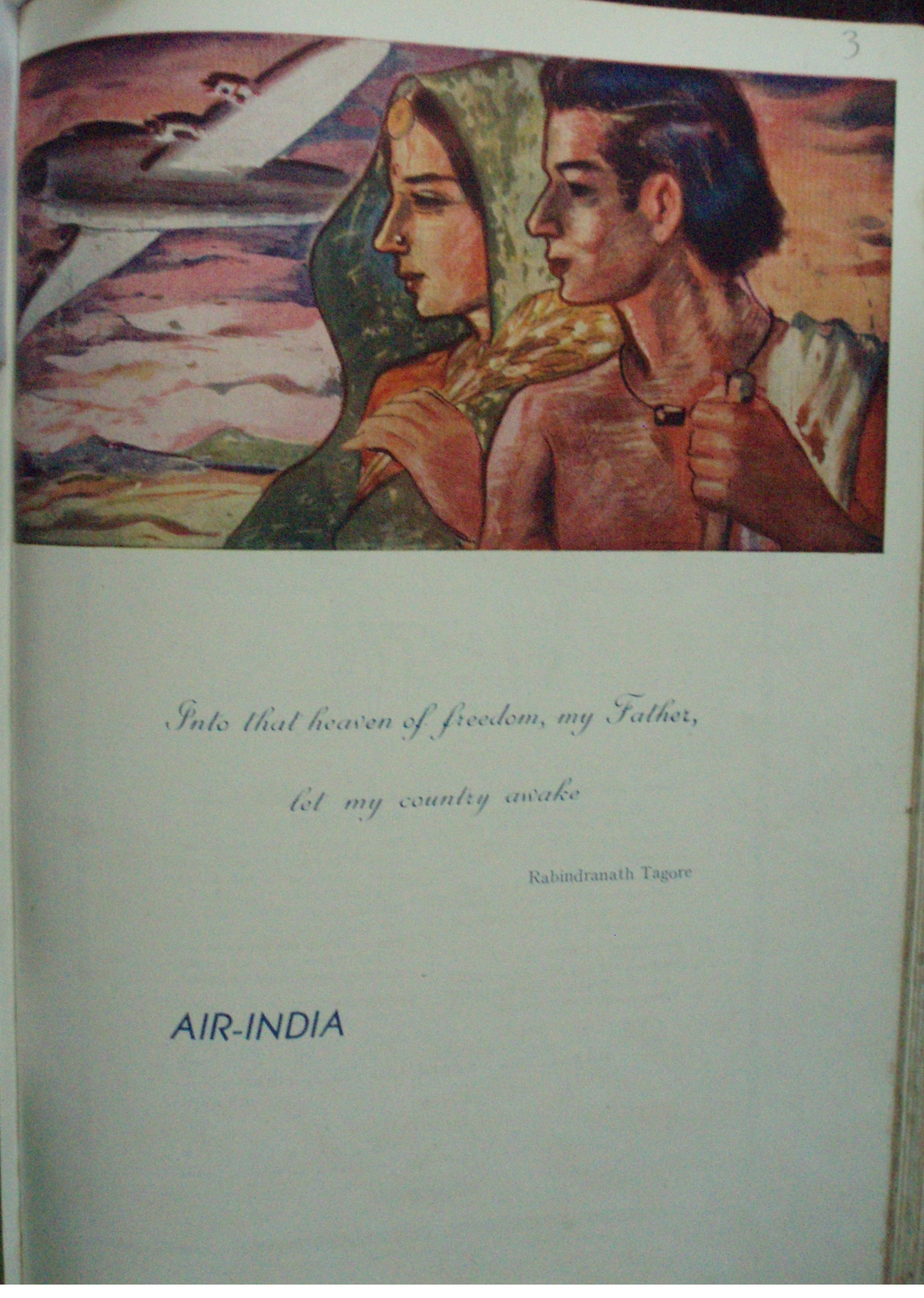
Advertisement in Marg Magazine with the first Air India poster by Walter Langhammer in 1946 (Page from Marg vol. 1, no. 2, January 1947 has been reproduced with the permission of The Marg Foundation, Mumbai, India). 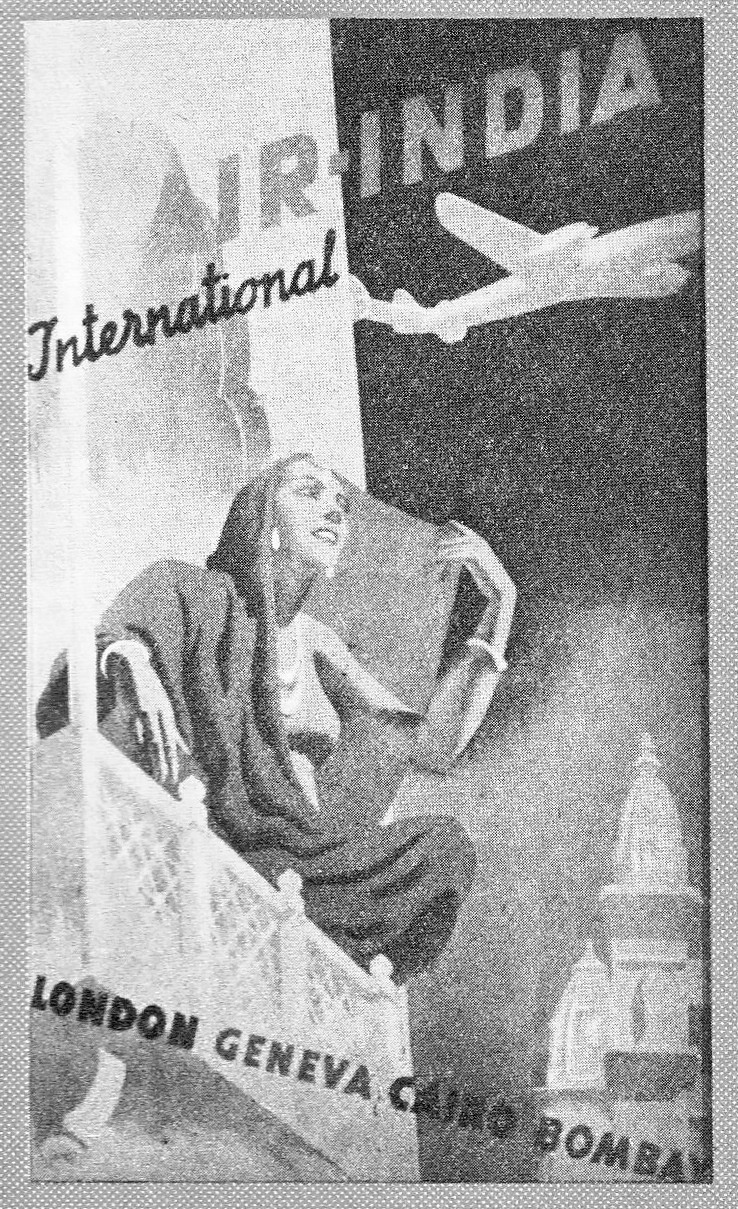
Air India poster commemorating the first international flight London–Geneva–Cairo–Bombay, by Walter Langhammer, 1948 (Air India, poster no. 3, 1973. Photo: Margit Franz 2010). 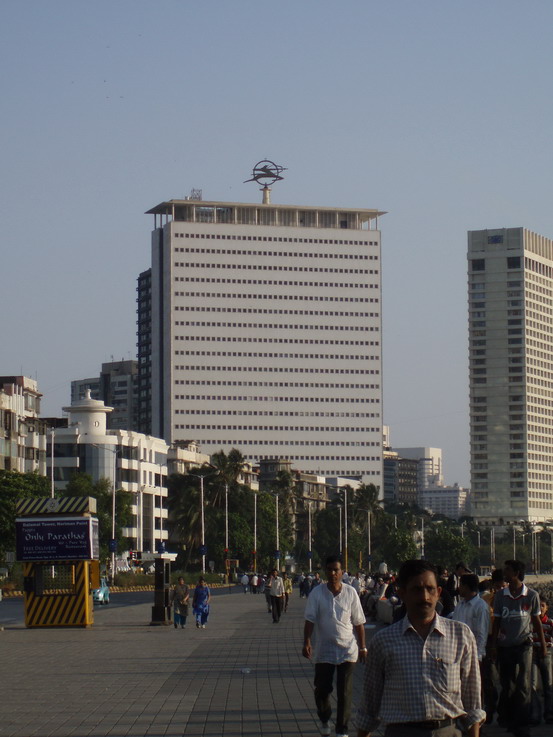
The Centaur as the Air India International emblem on the roof of the (new) Air India Building at Nariman Point (© Margit Franz, 2010). 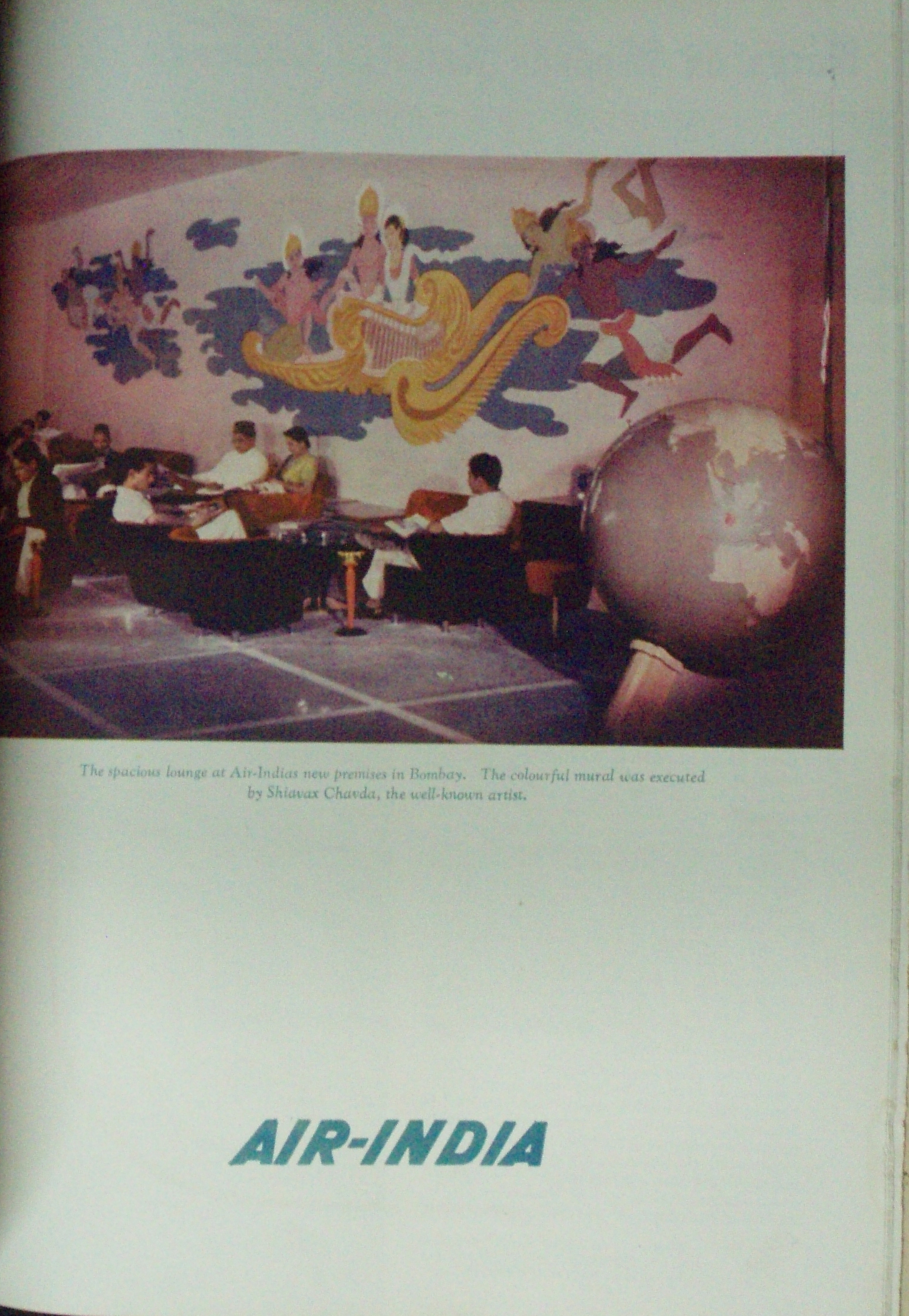
First Air India Mural Triumphant Aerial Return of Ram & Sita from Sri Lanka. “The spacious lounge at Air India new premises in Bombay. The colourful mural was executed by Shiavax Chavda, the well-known artist" (Marg, vol. 1, no. 4, July 1947; reproduced with the permission of The Marg Foundation, Mumbai, India). 
Jal Cowasji (middle) and gallery owner Kekoo Gandhy (far right) in Chemould Gallery, 1960s (Digital Photo Archive Margit Franz; © Gandhy Archive, Mumbai; All Rights Reserved). 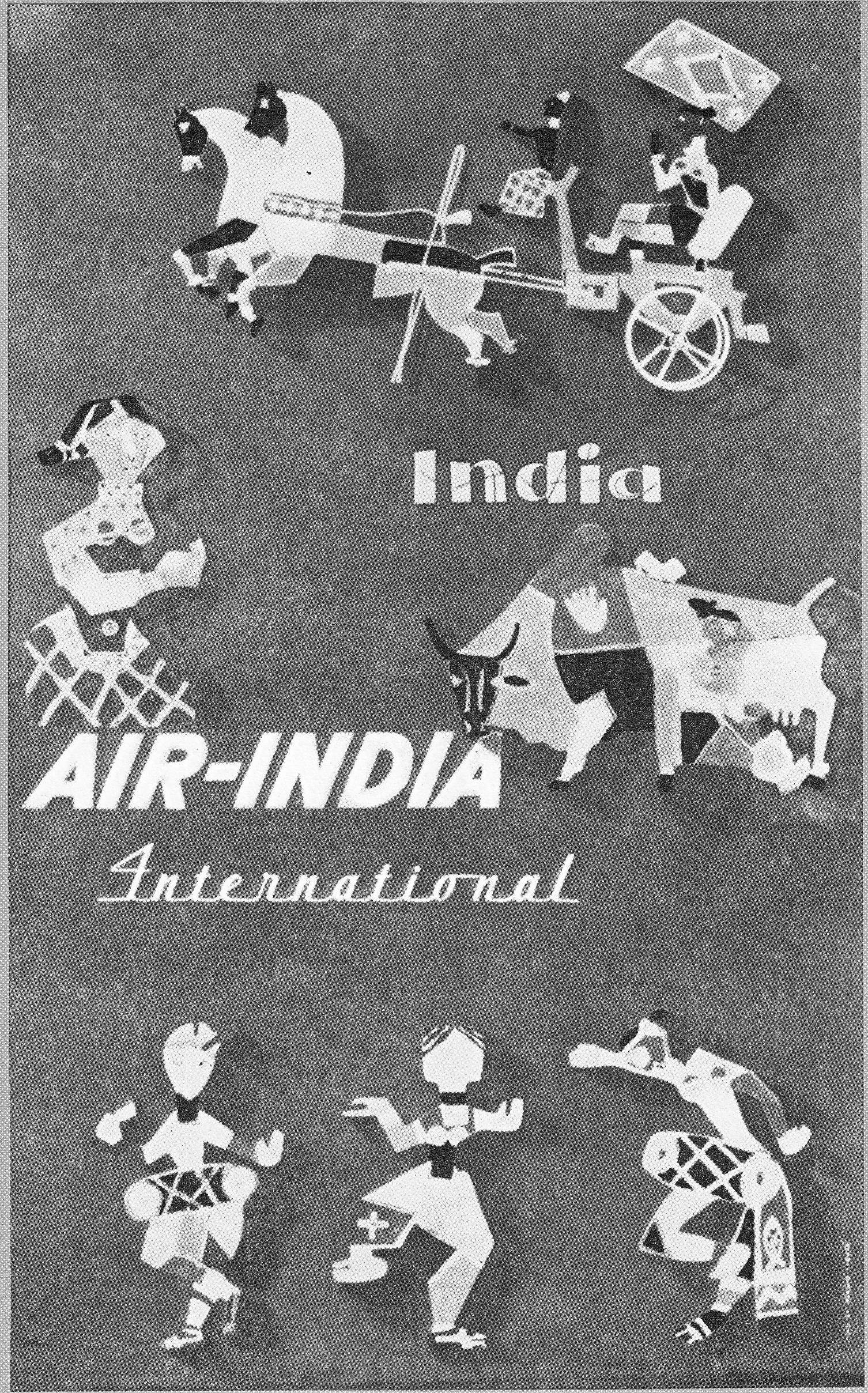
Air India poster by F.M. Husain, mid 1950s (Air India 1973, no. 28, Photo: Margit Franz 2010). Air India. The Rogue's Gallery. Air India, 1973.
Air India. The Air India Art Collection. Mapin, 2008.
Anonymous. “Air-India to Dedicate Its Kennedy Terminal Today.” The New York Times, 5 February 1964, p. 22. www.nytimes.com/1964/02/05/archives/airindia-to-dedicate-its-kennedy-terminal-today.html. Accessed 30 March 2021.
Chatterjee, Ram. Bendré: The Painter and the Person. Bendré Foundation for Art and Culture & Indus Corporation, 1990.
Franz, Margit. “Transnationale & transkulturelle Ansätze in der Exilforschung am Beispiel der Erforschung einer kunstpolitischen Biographie von Walter Langhammer.” Mapping Contemporary History. Zeitgeschichten im Diskurs, edited by Margit Franz et al., Böhlau 2008, pp. 243–272. Academia, www.academia.edu/45523873/Transnationale_und_transkulturelle_Ans%C3%A4tze_in_der_Exilforschung_am_Beispiel_der_Erforschung_einer_kunstpolitischen_Biographie_von_Walter_Langhammer. Accessed 14 March 2021.
Franz, Margit. “Graz – Wien – Bombay – London: Walter Langhammer, Künstler und Kunstförderer.” Historisches Jahrbuch der Stadt Graz, vol. 40, edited by Bouvier, F., and N. Reisinger, Stadt Graz – Kulturamt, 2010, pp. 253–276. Academia, www.academia.edu/45524011/Graz_Wien_Bombay_London_Walter_Langhammer_Künstler_und_Kunstförderer. Accessed 14 March 2021.
Franz, Margit. Gateway India: Deutschsprachiges Exil in Indien zwischen britischer Kolonialherrschaft, Maharadschas und Gandhi. CLIO, 2015.
Gehi, Reema. “How the Maharaja Became an Art Lover.” Pune Mirror, 16 July 2017, punemirror.indiatimes.com/others/sunday-read/how-the-maharaja-became-an-art-lover/articleshow/59612492.cms. Accessed 10 March 2021.
Gehi, Reema. “Inching Closer to Divestment, Air India Invites Public to Retrace History through a Photo Exhibition of its Art, Artefacts and Textiles.” Mumbai Mirror, 13 February 2020, mumbaimirror.indiatimes.com/mumbai/other/maharaja-in-full-finery/articleshow/74108793.cms. Accessed 14 March 2021.
Gupta, Gargi. “Distress sale?” Business Standard, 24 January 2013, www.business-standard.com/article/beyond-business/distress-sale-112090800023_1.html. Accessed 14 March 2021.
Gupta, Gargi. “First Ever Exhibition of the Air India Art Collection.” DNA, 17 August 2013, www.dnaindia.com/lifestyle/report-first-ever-exhibition-of-the-air-india-art-collection-1875819. Accessed 10 March 2021.
Johnson, Thomas. “#IndianMastersRetrospectiveExhibition Featuring Paintings and Sketches by Artist #ShiavaxChavda Friday, December 21, 2018 to Sunday, January 6, 2019.” 19 December 2018, Johnsonthomasoncinema, johnsonthomasoncinema.wordpress.com/2018/12/19/indianmastersretrospectiveexhibition-featuring-paintings-and-sketches-by-artist-shiavaxchavda-friday-december-21-2018-to-sunday-january-6-2019/. Accessed 14 March 2021.
Khaitan, Piyush. “M.F. Husain and his Air-India Creations.” 13 September 2016, Air-India Collector, www.airindiacollector.com/blog/archives/09-2016. Accessed 2 March 2021.
Khaitan, Piyush. “The Birth of India's Greatest Art Collections.” 23 July 2017, Air-India Collector, www.airindiacollector.com/blog/category/art. Accessed 2 March 2021.
Nath, Aman, and Jay Vithalani with Tulsi Vatsal. Horizons: The Tata-India Century 1904–2004. India Book House, 2005.
Ramanath, K.R. “Another Exciting Story to the Maharajah's Greatness: A Keen Supporter of Indian Contemporary Art.” South China Morning Post, 8 June 1973, p. 43 (ProQuest Historical Newspapers: South China Morning Post).
Word Count: 382
Archival records from a personal interview between the author and Jal Cowasjee, Mumbai, 5 May 2007.
Archival records from personal interviews between the author and Khorshed and Kekoo Gandhy, Mumbai, 30 April to 3 May 2003; 18 to 22 January 2004; 26 April to 12 May 2007; 13 to 15 October 2008; 24 October 2010.
Air-India Collector, www.airindiacollector.com/.
Air India First Flight Covers, Posters, Postcards, Coasters, Luggage Labels & Tata Flight Covers, www.air-india-first-flight-covers.com/.
Marg, Marg Publications, https://marg-art.org/.
Private Archive Margit Franz, Sinabelkirchen.Word Count: 72
- 1946
- Bombay
- Margit Franz. "Air India." METROMOD Archive, 2021, https://archive.metromod.net/viewer.p/69/2951/object/5145-11941875, last modified: 13-09-2021.
-
Open Studio Evenings by Käthe and Walter LanghammerSalonBombay
The painter Walter Langhammer and his wife Käthe built an informal infrastructure to promote local avant-garde artists and regularly invited them to Open Studio Evenings at their studio.
Word Count: 29
TIFRUniversity / Higher Education Institute / Research InstituteBombayThe TIFR is one of India’s premier scientific institutions. Inside its buildings, scientists ponder over path-breaking ideas. Also, within its hallowed walls is a fine collection of modern Indian art.
Word Count: 31
Rudolf von LeydenGeologistAdvertisement SpecialistJournalistArt CriticArt CollectorCartoonistBombayThe advertisement expert, Rudolf von Leyden, became a major art critic and art historian in Bombay in the 1940s, advocating an urgent need for modernism in art in post-colonial India.
Word Count: 30